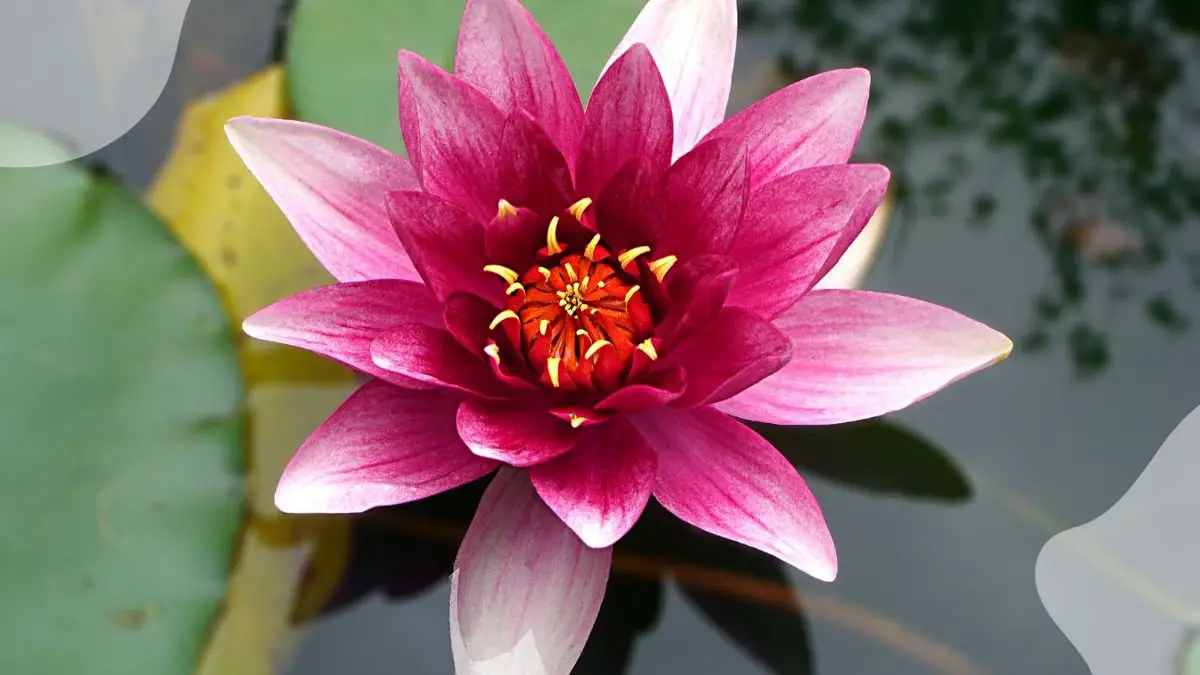The lotus flower holds profound significance in various cultures worldwide, symbolizing purity, enlightenment, and rebirth. Dating back thousands of years, this sacred flower has been revered in ancient Egyptian, Hindu, and Buddhist traditions. In Hinduism and Buddhism, the lotus is associated with divine beauty and spiritual awakening, meaning emerging pure and untouched from murky waters. The intricate symbolism attached to the lotus flower transcends religious boundaries, embodying resilience, growth, and the journey towards enlightenment.
Key Takeaways
- Understanding the significance of the lotus flower can inspire us to embrace growth and transformation in our lives.
- The colors and meanings associated with lotus flowers symbolize purity, enlightenment, and spiritual awakening.
- The presence of lotus flowers in various cultures highlights their universal appeal and symbolism across different societies.
- Lotus holds significant religious symbolism in Buddhism, Hinduism, and other belief systems, representing purity, beauty, and divine birth.
- Exploring fun facts about lotus flowers can deepen our appreciation for this beautiful and symbolic plant.
- By incorporating the lessons from the lotus flower into our lives, we can strive for personal growth, purity, and spiritual enlightenment.
Significance of the Lotus Flower
Symbol of Purity
The lotus symbolizes purity in Buddhism, embodying purity of speech, body, and mind. It represents spiritual awakening and faithfulness. The breaking of the surface signifies the journey from desire to enlightenment.
Overcoming Adversity
Emerging from muddy waters to bloom, the lotus symbolizes overcoming challenges. It represents resilience and strength in the face of adversity, showcasing the ability to thrive in difficult conditions.
Embracing Rebirth
In ancient Egyptian beliefs, the lotus is linked to rebirth and the sun. The flower closes at night and re-emerges in the light, symbolizing renewal. Its slow emergence from water over three days signifies a process of rebirth.
Lotus Flower Colors and Meanings
White Lotus Symbolism
White lotus symbolizes mental purity and spiritual perfection in Buddhism. It is the most common lotus in Hinduism, representing beauty and eternity. Linked to gods like Laxmi and Brahma, embodying wise qualities.
Pink Lotus Meaning
Pink lotus is considered the most divine in Hinduism. It represents the true lotus of Buddha in Buddhism, symbolizing love, compassion, and spiritual enlightenment.
Red Lotus Significance
Red lotus is associated with love and compassion in Buddhism, representing the victory of the spirit over wisdom. It symbolizes deep emotions and spiritual growth.
Lotus in Various Cultures
Eastern Traditions
Lotus, a revered aquatic flower, holds profound meanings in Buddhism, Hinduism, and ancient Egyptian beliefs. Symbolizing purity, spirituality, and rebirth, the lotus is a powerful emblem across Eastern cultures. Its significance reflects diverse interpretations and symbolism deeply rooted in Eastern traditions.
In Buddhism, the lotus represents enlightenment and spiritual awakening. The flower's ability to emerge pure and untouched from muddy waters mirrors the journey of a soul towards enlightenment. In Hinduism, the lotus symbolizes beauty, prosperity, fertility, and eternity. It is associated with various deities like Lakshmi and Saraswati. Ancient Egyptians viewed the lotus as a symbol of creation and rebirth due to its daily blooming cycle.
Western Interpretations
Contrary to its prominent role in Eastern cultures, the significance of the lotus flower is less pronounced in Western interpretations. While Western societies may appreciate the lotus for its general beauty and elegance, its symbolic depth is not as prevalent as in the East. The limited presence of lotus symbolism in Western traditions contrasts sharply with the rich tapestry of meanings found in Eastern philosophies.
In Western art and literature, the lotus might be used more for aesthetic purposes rather than carrying deep symbolic significance. Its graceful appearance and delicate petals often evoke feelings of tranquility and serenity. However, compared to its multifaceted meanings in Eastern cultures, the lotus holds a more straightforward interpretation in Western contexts.
Lotus in Religion
Buddhism and Lotus
Lotus, symbolizing purity and enlightenment, holds deep significance in Buddhism. It represents a person's spiritual journey towards nirvana. Various colored lotuses carry specific meanings related to spiritual growth. For example, the pink lotus signifies the highest state of enlightenment.
Hinduism and Lotus
In Hinduism, the lotus is a powerful symbol of beauty, fertility, and eternity. It is closely linked to deities like Laxmi, the goddess of wealth, and Brahma, the creator. The unopened lotus bud is emblematic of a soul that is ready to unfold into spiritual reality, signifying potential and growth.
Ancient Egyptian Beliefs
Ancient Egyptians associated the lotus with rebirth and the sun, viewing it as a symbol of creation and regeneration. They observed how the lotus closes at night and re-emerges during daylight, connecting it to cycles of life and death. The slow emergence of the lotus from water symbolizes renewal and rebirth, reflecting their beliefs in resurrection and new beginnings.
Fun Facts About Lotus
Longevity of Lotus Seeds
Lotus seeds are known for their remarkable longevity, with the ability to remain viable for centuries. This extraordinary feature allows the seeds to withstand various environmental conditions, ensuring their survival for extended periods.
Self-Cleaning Properties of Lotus Leaves
The lotus leaves possess unique self-cleaning abilities attributed to their hydrophobic properties. This natural characteristic enables water droplets to roll off the surface, carrying away dust and dirt particles, keeping the leaves clean and pristine.
National Flower of India and Vietnam
The lotus holds significant cultural importance as the national flower of both India and Vietnam. In these countries, the lotus symbolizes purity, beauty, and spiritual growth, reflecting its revered status in their respective cultures.
Summary
In exploring the significance of the lotus flower, you've uncovered its deep-rooted meanings in various cultures and religions. From purity and enlightenment to rebirth and resilience, the lotus symbolizes profound concepts that resonate across different belief systems. Understanding the diverse colors and interpretations associated with the lotus enriches your appreciation for this captivating flower. Delving into fun facts about the lotus has not only expanded your knowledge but also sparked a newfound admiration for its beauty and symbolism.
Take a moment to reflect on the universal appeal of the lotus flower and how its symbolism can inspire you in your daily life. Whether it's embracing change, striving for inner peace, or celebrating growth, the lotus serves as a powerful reminder of the beauty that can emerge from challenging circumstances. Share your newfound insights with others and continue exploring the rich tapestry of meanings woven into this timeless flower.
Frequently Asked Questions
What is the significance of the Lotus Flower?
The lotus flower symbolizes purity, enlightenment, and rebirth in various cultures and religions. It represents overcoming struggles and obstacles to achieve beauty and perfection.
Why do lotus flowers come in different colors?
Lotus flowers come in various colors like white, pink, blue, and purple, each with its own symbolism. White symbolizes purity and spiritual perfection, pink represents divinity and grace, blue signifies wisdom and knowledge, while purple symbolizes mysticism and spirituality.
How is the lotus flower perceived in different cultures?
In different cultures, the lotus flower holds diverse meanings. For example, in ancient Egypt, it symbolized creation and rebirth; in Buddhism, it represents purity and enlightenment; in Hinduism, it symbolizes beauty and fertility.
What role does the lotus flower play in religion?
The lotus flower is a sacred symbol in many religions. In Buddhism, it represents purity of body, speech, and mind. In Hinduism, it symbolizes beauty, prosperity, fertility, eternity, and divine birth.
Can you share some fun facts about lotus flowers?
Lotus flowers have fascinating attributes:
- They can live for over 1,000 years.
- They can generate heat to attract pollinators.
- They can grow in murky waters but remain unstained by mud.
- They close at night and open at dawn.
Image Source: Paid image from CANVA



